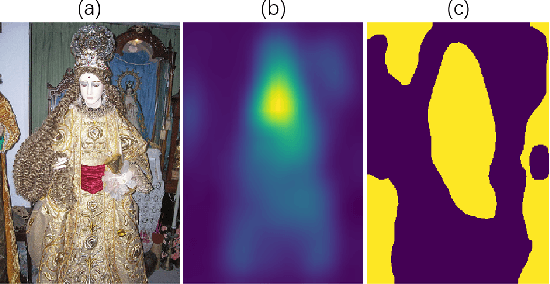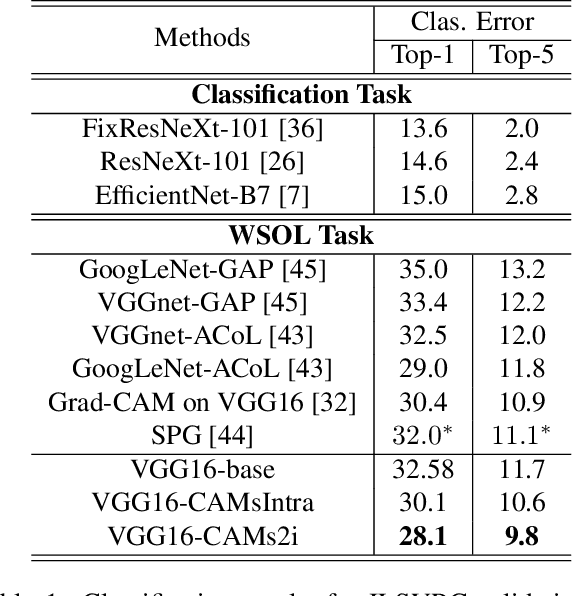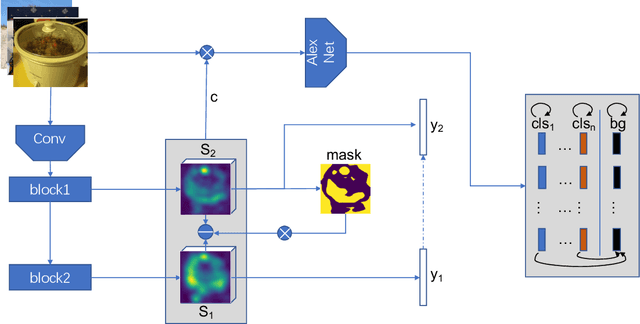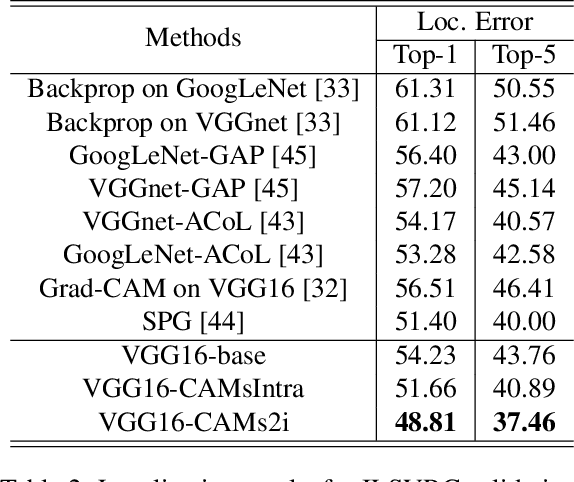Weakly Supervised Object Localization with Inter-Intra Regulated CAMs
Paper and Code
Nov 19, 2019



Weakly supervised object localization (WSOL) aims to locate objects in images by learning only from image-level labels. Current methods are trying to obtain localization results relying on Class Activation Maps (CAMs). Usually, they propose additional CAMs or feature maps generated from internal layers of deep networks to encourage different CAMs to be either \textbf{adversarial} or \textbf{cooperated} with each other. In this work, instead of following one of the two main approaches before, we analyze their internal relationship and propose a novel intra-sample strategy which regulates two CAMs of the same sample, generated from different classifiers, to dynamically adapt each of their pixels involved in adversarial or cooperative process based on their own values. We mathematically demonstrate that our approach is a more general version of the current state-of-the-art method with less hyper-parameters. Besides, we further develop an inter-sample criterion module for our WSOL task, which is originally proposed in co-segmentation problems, to refine generated CAMs of each sample. The module considers a subgroup of samples under the same category and regulates their object regions. With experiment on two widely-used datasets, we show that our proposed method significantly outperforms existing state-of-the-art, setting a new record for weakly-supervised object localization.
 Add to Chrome
Add to Chrome Add to Firefox
Add to Firefox Add to Edge
Add to Edge